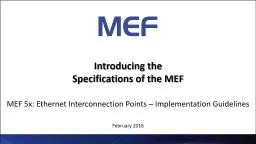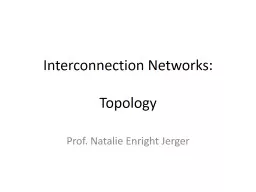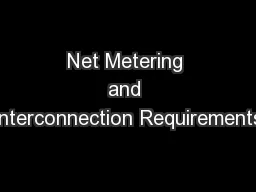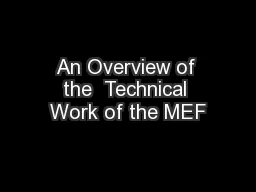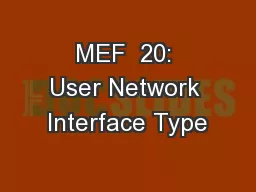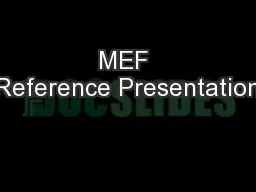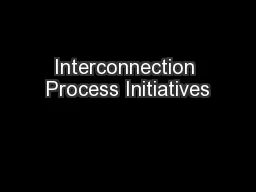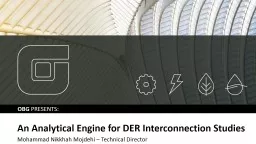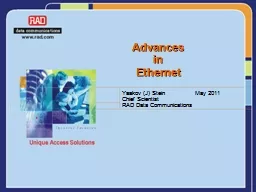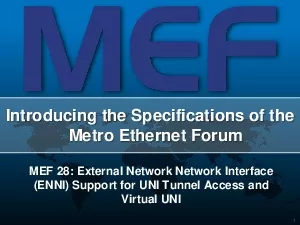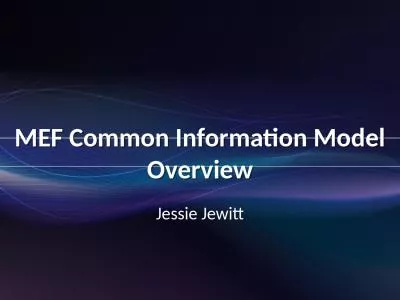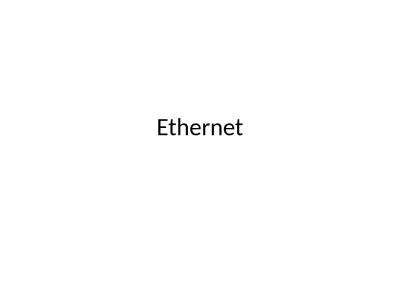PPT-MEF 54: Ethernet Interconnection Point (EIP):
Author : yoshiko-marsland | Published Date : 2018-07-03
An ENNI Implementation Agreement April 2016 Introducing the Specifications of the MEF MEF Reference Presentations Intention These MEF reference presentations are
Presentation Embed Code
Download Presentation
Download Presentation The PPT/PDF document "MEF 54: Ethernet Interconnection Point (..." is the property of its rightful owner. Permission is granted to download and print the materials on this website for personal, non-commercial use only, and to display it on your personal computer provided you do not modify the materials and that you retain all copyright notices contained in the materials. By downloading content from our website, you accept the terms of this agreement.
MEF 54: Ethernet Interconnection Point (EIP):: Transcript
Download Rules Of Document
"MEF 54: Ethernet Interconnection Point (EIP):"The content belongs to its owner. You may download and print it for personal use, without modification, and keep all copyright notices. By downloading, you agree to these terms.
Related Documents

